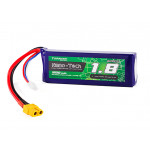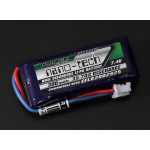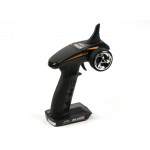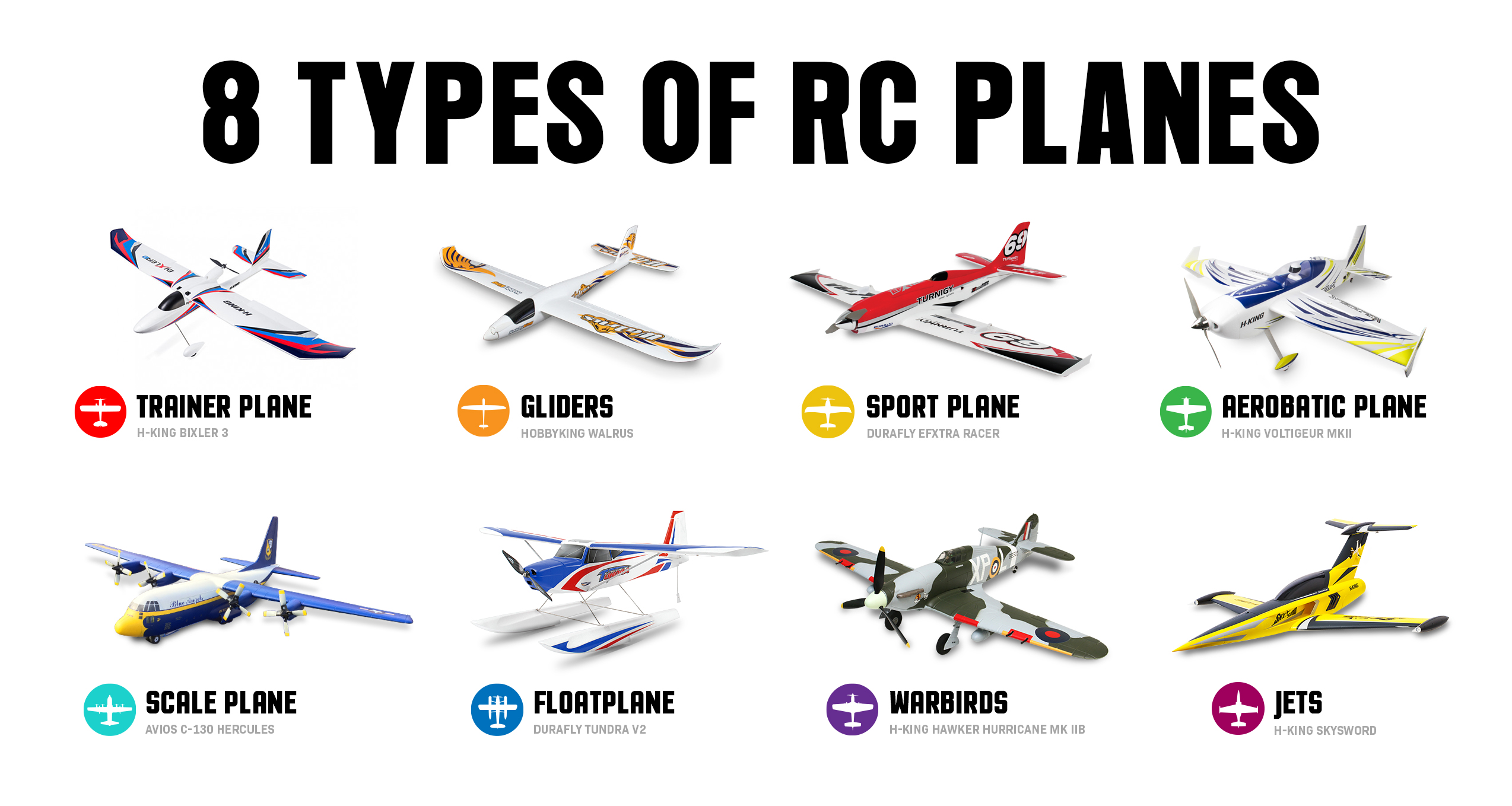
When you first start out in the hobby you may find all the different types of RC planes to be rather confusing. Perhaps you have heard about them before; however, do you know what each type entails or how they differ?
Here are eight popular types of RC planes explained to help you not only find a plane that suits your taste, but also meets your needs.
Trainer Planes
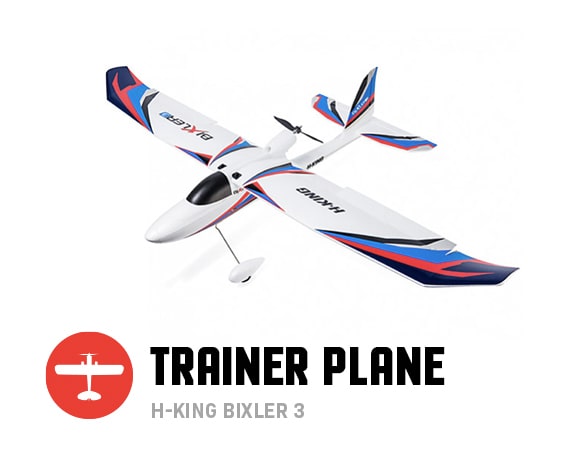 Trainer RC airplanes are designed for beginners and are generally less flashy and exciting. They typically have a high wing placement - wings mounted above the fuselage - with both wing panels slightly angled upwards; this upward angle is termed dihedral.
Trainer RC airplanes are designed for beginners and are generally less flashy and exciting. They typically have a high wing placement - wings mounted above the fuselage - with both wing panels slightly angled upwards; this upward angle is termed dihedral.
The high wing and dihedral architecture are self-correcting mechanisms that give your trainer plane greater lateral stability. If a disturbance (such as a gust of wind) causes one wing to dip, the lower wing will produce more lift and push your aircraft back into horizontal equilibrium.
Sport Planes
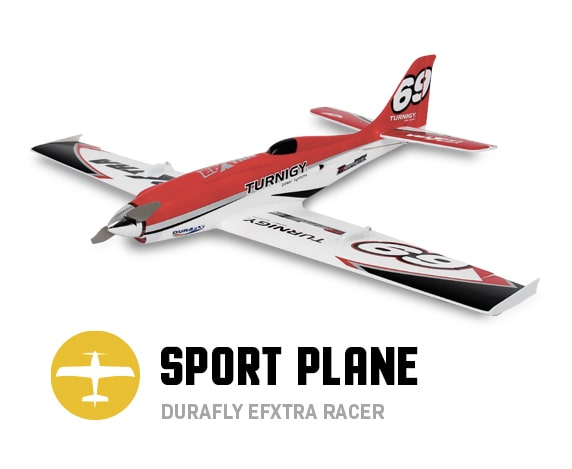 A sport plane is the next level up from an RC trainer and can be thought of as a hybrid between a trainer and an aerobatic plane. While they maintain some self-correcting qualities for stable flight, they also incorporate architectures such as a low-wing configuration and symmetrical airfoils which enable them to pull off more advanced maneuvers. For this reason, many hobbyists actually use a sports plane as an aerobatic trainer.
A sport plane is the next level up from an RC trainer and can be thought of as a hybrid between a trainer and an aerobatic plane. While they maintain some self-correcting qualities for stable flight, they also incorporate architectures such as a low-wing configuration and symmetrical airfoils which enable them to pull off more advanced maneuvers. For this reason, many hobbyists actually use a sports plane as an aerobatic trainer.
Sport planes make up the biggest category of RC planes on the market. Unlike scale planes or warbirds which are modeled after real planes, a sport plane can literally be anything; hence, they are designed purely for function e.g., for speed, agility, or aerobatics.
3D Aerobatic Planes
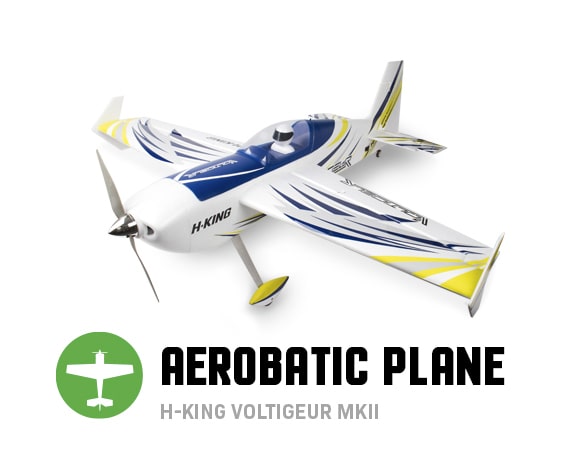 Aerobatic RC planes are designed and tailored for aerobatic maneuvers. They are built with larger control surfaces (relative to their size) than regular warbirds or trainers, giving them greater roll, pitch, and yaw rates. This enables them to pull off extreme maneuvers at both high and low speeds.
Aerobatic RC planes are designed and tailored for aerobatic maneuvers. They are built with larger control surfaces (relative to their size) than regular warbirds or trainers, giving them greater roll, pitch, and yaw rates. This enables them to pull off extreme maneuvers at both high and low speeds.
Most aerobatic RC planes are constructed with a mid-wing configuration, with the wing fitted at the mid-portion of the fuselage. Combined with symmetrical airfoils an aerobatic RC plane has no self-correcting tendencies, which allows them to complete advanced manoeuvrers with high precision. Self-correcting architectures such as a high wing configuration or dihedral can be detrimental when it comes to aerobatics as they may derail your maneuvers.
Gliders
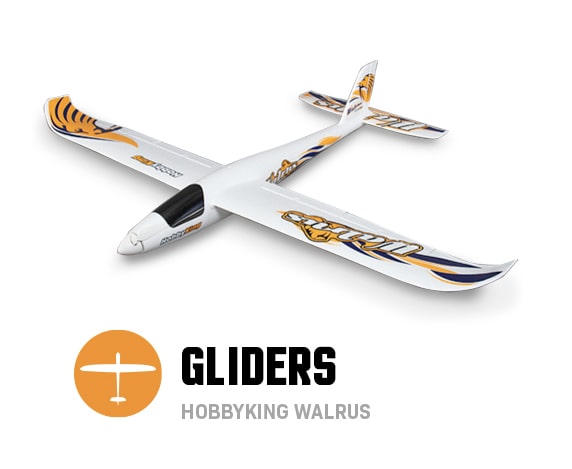 There are generally two types of RC gliders: pure gliders and powered gliders. Pure gliders don’t have a power source to generate thrust but rely solely on the wind and thermals - hot air pockets- to stay airborne. They are normally designed with long thin wings and a slender fuselage which enables them to generate the least drag for any given amount of lift. Because they don't have an engine or motor, you will need to hand launch them into the air; once in the air, they operate just like any other RC plane.
There are generally two types of RC gliders: pure gliders and powered gliders. Pure gliders don’t have a power source to generate thrust but rely solely on the wind and thermals - hot air pockets- to stay airborne. They are normally designed with long thin wings and a slender fuselage which enables them to generate the least drag for any given amount of lift. Because they don't have an engine or motor, you will need to hand launch them into the air; once in the air, they operate just like any other RC plane.
A powered glider is a glider with a propeller. They are a popular choice for beginners as their lightweight and aerodynamically streamlined design make them very stable and easy to fly. Once you get enough altitude, you can keep your hands off the throttle and enjoy much longer flight times than a regular electric RC plane.
Scale Planes
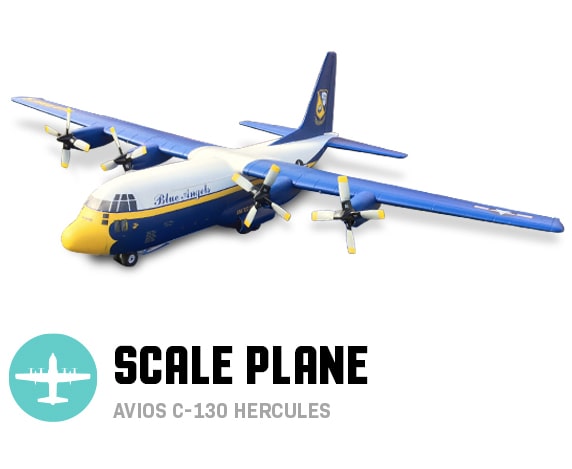 RC scale planes are models that replicate real aircraft but at a much smaller scale – e.g., a 1:15 scale plane would mean that the plane is 15 times smaller than the real thing. Apart from the physical characteristics, a quality-built scale plane may even replicate functional attributes. For example, HobbyKing's Avios C-130 features fully sequenced landing gears, a working cargo door, and operable navigation lights.
RC scale planes are models that replicate real aircraft but at a much smaller scale – e.g., a 1:15 scale plane would mean that the plane is 15 times smaller than the real thing. Apart from the physical characteristics, a quality-built scale plane may even replicate functional attributes. For example, HobbyKing's Avios C-130 features fully sequenced landing gears, a working cargo door, and operable navigation lights.
While hobbyists can enjoy the intricate details and beauty of the original aircraft, scale models are not necessarily built for performance. This is mainly due to their wings and control surfaces which are slightly smaller than your regular sport or aerobatic plane. A full-scale aircraft will have no problem as the sheer size of their wings can generate enough lift for optimum performance. However, when scaled down by 15 or even 20 times, the aerodynamics of the original aircraft will inevitably become less potent. So, if you want a high-performance scale plane, buy a larger one.
Floatplanes
 The terms "floatplanes" and "seaplanes" are sometimes used interchangeably, however, this is incorrect. Seaplanes - also referred to as flying boats - use their fuselage for takeoffs and landings, whereas a floatplane, uses floats or pontoons; their fuselage never touches the water. Generally, an RC seaplane is restricted to the waters when not flying, however, most RC floatplanes - like the Durafly Tundra - will have the option to take off and land both on water and ground - making them an amphibious aircraft.
The terms "floatplanes" and "seaplanes" are sometimes used interchangeably, however, this is incorrect. Seaplanes - also referred to as flying boats - use their fuselage for takeoffs and landings, whereas a floatplane, uses floats or pontoons; their fuselage never touches the water. Generally, an RC seaplane is restricted to the waters when not flying, however, most RC floatplanes - like the Durafly Tundra - will have the option to take off and land both on water and ground - making them an amphibious aircraft.
RC floatplanes have always been quite popular as they offer another level of realism and novelty to the hobby. The skills required to take off and land on water are completely different from those on the ground. Yet, once mastered, the epic scenery of your plane delicately slicing the calm waters before taking to the air is truly sensational. And with 71% of the Earth's surface covered in water, you may find that flying at a lake, river, or beach to be much more accessible and spacious compared to your local park or flying strip.
Warbirds
 The term warbirds generally refer to any vintage aircraft that has served in the military. Technically, this encompasses all planes that have seen action in any wars, however, RC warbirds are mostly from WW2. Some of the most popular RC warbirds include the P-51 Mustang, the Spitfire, and the Vought F4U Corsair.
The term warbirds generally refer to any vintage aircraft that has served in the military. Technically, this encompasses all planes that have seen action in any wars, however, RC warbirds are mostly from WW2. Some of the most popular RC warbirds include the P-51 Mustang, the Spitfire, and the Vought F4U Corsair.
What makes warbirds so popular? If you asked a true hobbyist this question, be prepared to forfeit at least two hours for an answer. To save time, here is a list of what makes RC warbirds so irresistible: nostalgic, explicit, charismatic, classic, aesthetic, photogenic...
Jets
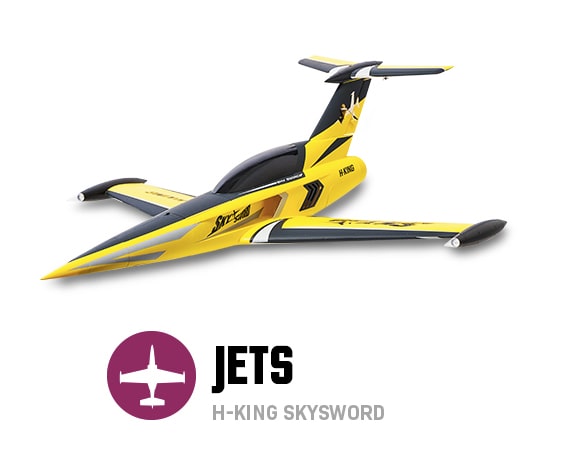 The differences between a real jet and a plane are apparent, however, because RC jets can also use propellers to generate thrust, classifying them as jets is technically incorrect. Nevertheless, in the hobby, you will find three types of RC jets: propeller-driven jets, EDF (Electrical Ducted Fan) jets, and turbine jets.
The differences between a real jet and a plane are apparent, however, because RC jets can also use propellers to generate thrust, classifying them as jets is technically incorrect. Nevertheless, in the hobby, you will find three types of RC jets: propeller-driven jets, EDF (Electrical Ducted Fan) jets, and turbine jets.
Regardless of their power source, RC jets are built for scale-like performance - high speed and high agility. They typically have a mid-wing configuration with a trapezoidal and/or sweptback wing design - attributes that make them exceptionally streamlined. Their wings are also generally shorter or smaller giving them lower wing loading which greatly increases their maneuverability. If you want something cool, fast, and agile, then buying an RC jet is something you won't regret.
Hear it First: Join our Mailing List
Sign up to receive new product updates, exclusive discounts, news, and more!

